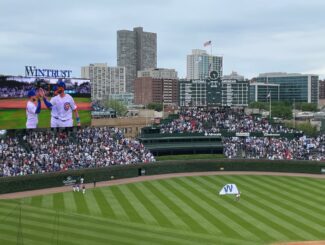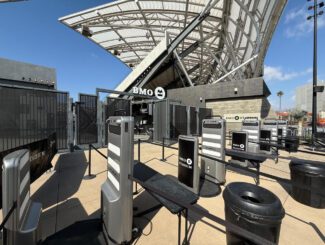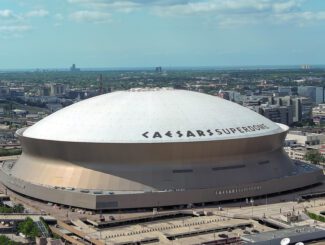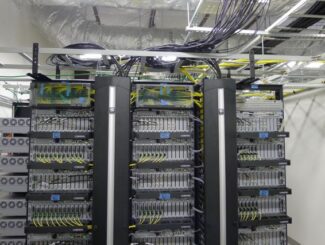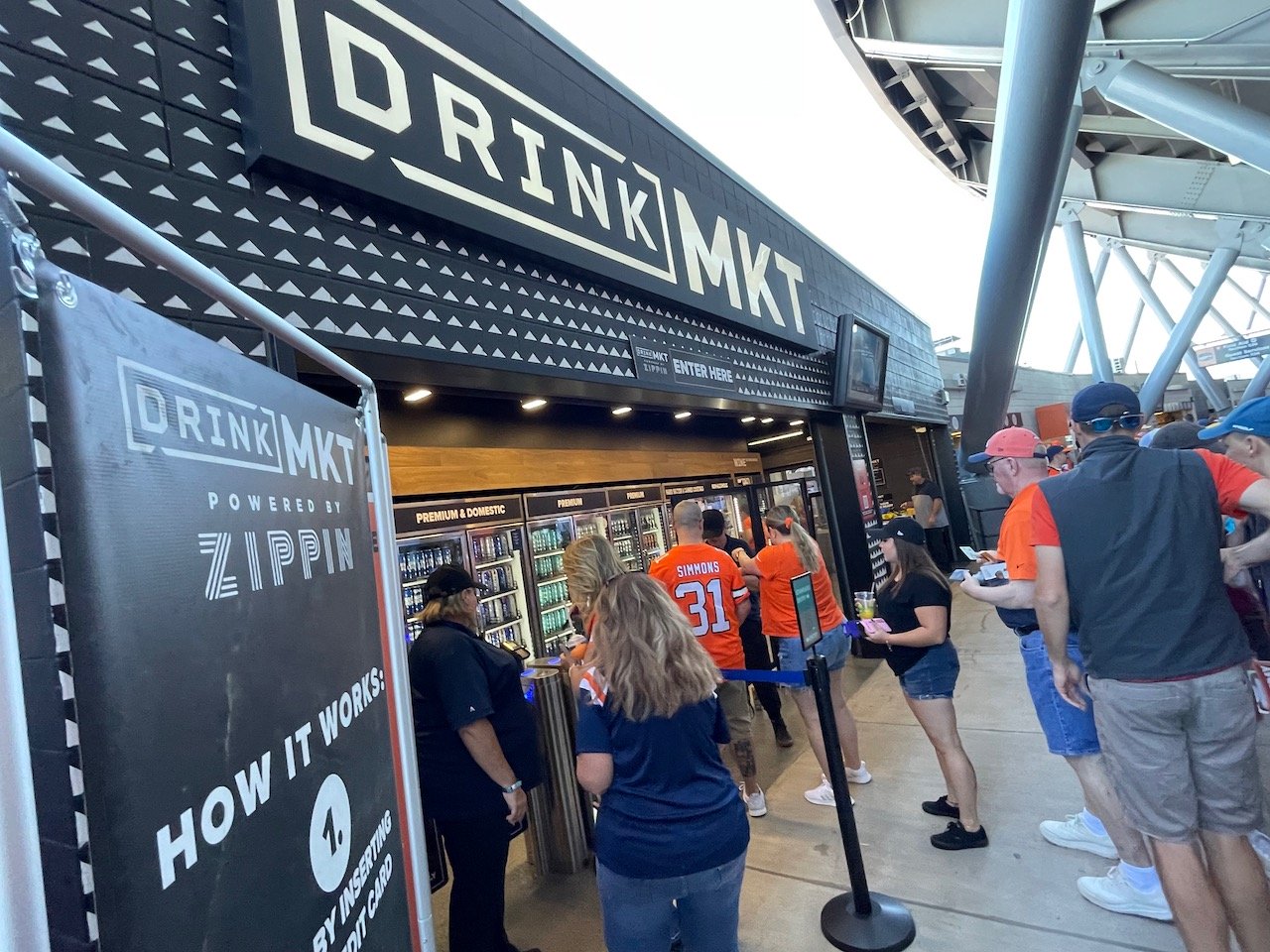
Zippin, a San Francisco-based startup which is leading the sports stadium market for checkout-free concession stands, is now embracing another new technology – facial authentication systems for age and payment verification – to speed transactions up even more.
“This is the holy grail for us,” said Alicia Woznicki, vice president of design and development at Aramark Sports + Entertainment, about the facial authentication trial taking place this season. Aramark, the catering firm that runs concession operations at Empower Field at Mile High, started its experiment at a few of the nine Zippin stands at the Broncos’ home opener, and has expanded it to the remaining stands as the season progressed.
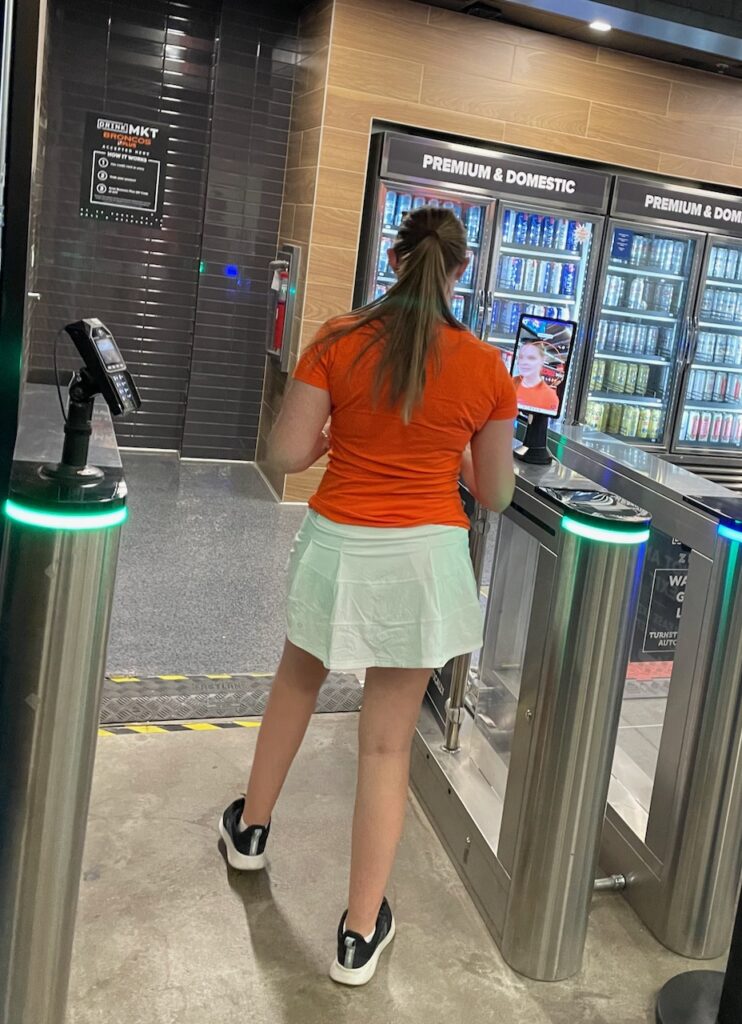
As part of Aramark’s focus on improving beverage services, Woznicki said that checking a fan’s ID to make sure they are 21 or older was the “last piece of friction” in the purchasing process, something that seemed like a stop sign on the highway of checkout-free transactions.
Like other checkout-free stands, the Zippin stores have won rave reviews from fans for the transaction speed, and enthusiasm from venues because of the increase in sales per stand and the fewer staff needed to run a checkout-free stand. What makes them fast is the combination of cameras and machine learning that lets fans simply scan some kind of payment proof at the entry gate, and then grab what they want and leave, with billing taking place later online.
Eliminating the last bottleneck
But at every checkout-free store, a staffer is still needed to check customer IDs for alcohol purchases, a physical process that is different for each individual and can eat up multiple seconds between fans finding their cards and staff doing visual evaluations.
“The ID check was really bottlenecking the fast experience [of checkout-free],” Wozicki said. “We wanted to see how fast we could make it.”
That’s when Aramark and the Broncos turned to the idea of using facial authentication for both payment information as well as age verification. Facial authentication systems – where participants enroll ahead of time with some combination of proof of physical ID, and sometimes payment information – are becoming more prevalent in society overall, from personal systems like those found on the iPhone to the Clear lanes and the new TSA checks at airports, which have introduced the idea of facial authentication to many.
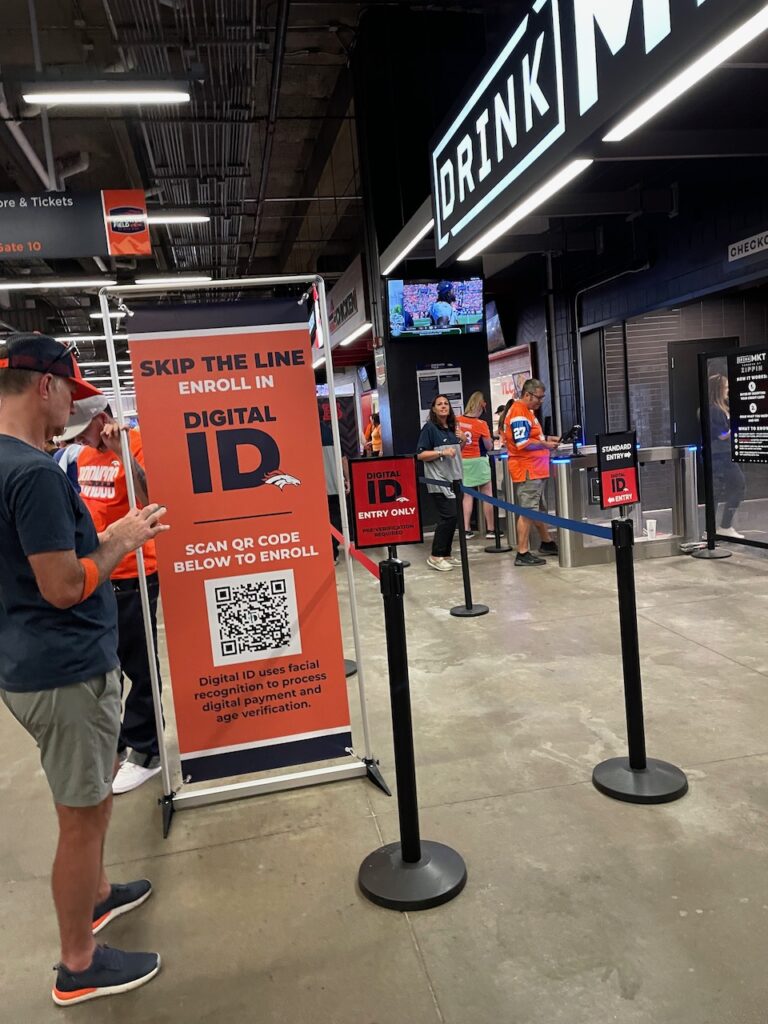
But in the stadium world the idea of having fans register beforehand with photos of their state-issued IDs and a selfie to allow them to enter stadiums or buy concessions by just showing their face to a monitor is still in its early days. Using software from a startup called Wicket, teams including the Cleveland Browns, New York Mets and the Atlanta Falcons have been running programs the past few years where fans can tie their tickets to a facial authentication program, providing them faster entry to the stadium by simply staring at a screen on the way in. Most of these deployments also have special lanes for the facial authentication systems, speeding up the interaction even more.
And last year, the Browns teamed with Aramark, Wicket and a mobile-ordering and kiosk software firm called TapIn2 to set up a program where fans could enroll with photos of their ID, a selfie, and payment data so that when they wanted to buy a beer from a special stand in the program, they only had to show their face to an iPad screen for payment and age verification.
A key part of that solution came from a Boulder, Colo.-based company called IDmission that has years of experience of doing online ID verification for banking companies. For the Denver Zippin stores trial, Aramark is only using software from IDmission for the facial-authentication lines, which are separate from the regular Zippin entry lines, to provide an “express” lane for fans willing to try the new system out.
Making checkout-free even faster
After enrolling in the system, fans in Denver can simply approach the tablet mounted on the entry gate, make sure their face is centered in the screen, and wait a few seconds for payment and ID verification. Then the gates open, and they can walk right in, only needing to show a staffer that their cans are opened before leaving.

On paper it might not sound like a big leap, but from what we observed at a recent Broncos game, being able to skip the number of variables that might pop up from ID checks and payment verifications can provide a huge improvement in overall transaction speed, from half a minute or so to just a few seconds.
The next trick for Aramark and the Broncos is to get fans to try out a system that combines the two new technologies. While the existing Zippin stands at Empower Field at Mile High are popular – according to Aramark, during the Broncos home game on Sept. 17 this year the nine Zippin stands saw a total of nearly 8,000 customers – at every game there are still fans who are new to the checkout-free concept and need a little on-site coaching. At the game we attended on Sept. 17, we only saw a combined handful of fans using the facial-authentication gates at all the Zippin stores we visited.
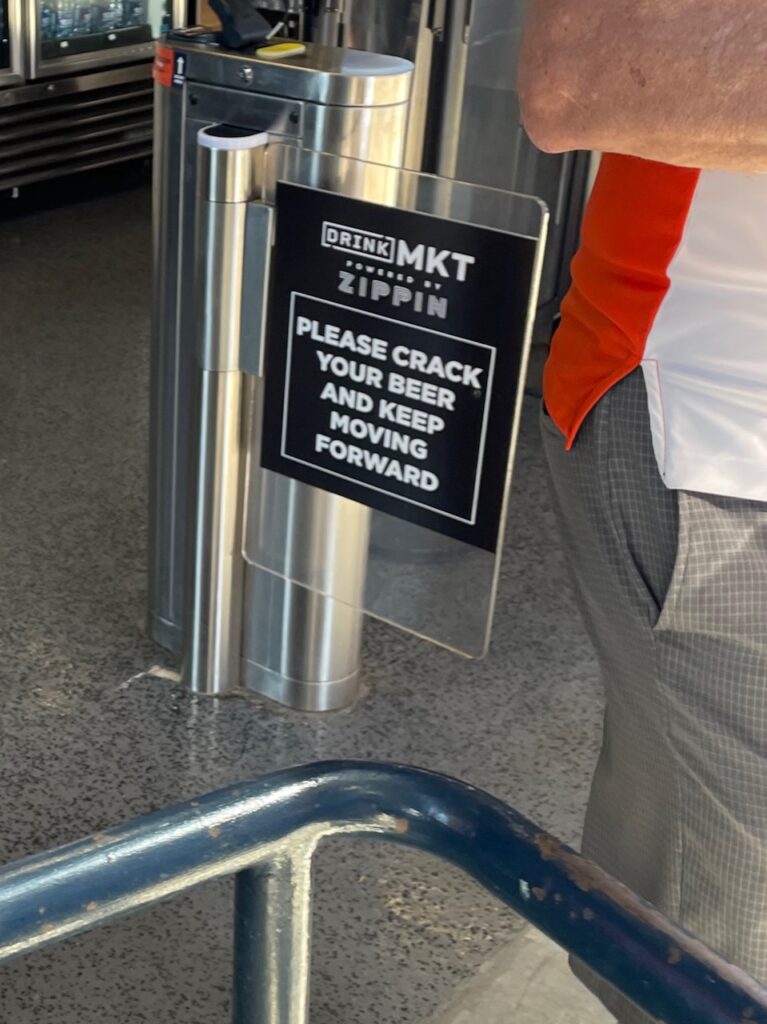
Part of the low user total may have been because the Broncos and Aramark had not yet sent out an informational email about the new system to season-ticket holders before the game. Other hindrances included some unclear signage at some of the smaller Zippin stands that made location of a different line for facial authentication hard to find. We did, however, see numerous fans in the Zippin store lines studying the posters advertising the facial-authentication system, and scanning the QR code for a link to the signup page while they waited.
(Since our visit, there have been almost 10,000 customers who have signed up for the Digital ID program, according to IDmission. Aramark added that 35.8 percent of customers who signed up have used the facial authentication system at least two times.)
At the biggest Zippin stand in the stadium, on the main lower concourse, a clearly marked and physically separated facial-authentication line saw several users in the few minutes we watched during our September visit. With no confusion and no need for staff assistance, those customers were verified and inside the store in five seconds or less. Customers who went through the usual process of scanning a card and showing an ID to a staffer could see times of 20 to 30 seconds or more to simply gain entry, according to several clockings we took while watching in person.
But overall, most of the Zippin transactions we timed were under a minute total from walking up to exiting. And while the Zippin stores did have lines forming outside them during the pregame crush, the lines moved quickly, clearly serving more fans in less time than the traditional belly-up stands that were nearby.
For the customers who had already embraced the facial-authentication system, combining that efficiency with the fast-pace shopping once inside a Zippin store seemed close to the fan concessions nirvana that venues have been seeking to provide. While some customers will always be wary of using biological information for payments, for an increasing number of stadiumgoers, the convenience of fast transactions apparently far outweighs the concerns.
Next: Part 2: Mashgin scanners provide flexibility and checkout speed
Editor’s note: This post is part 1 of our four-post report on the concessions technology in use at Denver’s Empower Field at Mile High. To go to the start of the report, click here. You can also download a PDF of the full report, with more photos



